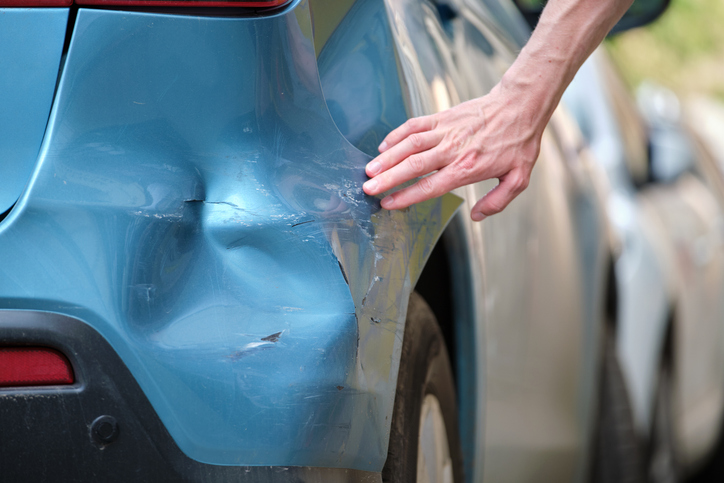- 2 Nov 2025

Car accidents in North Carolina cities are a daily occurrence, with major urban centers like Charlotte, Raleigh, and Greensboro witnessing thousands of collisions each year. Whether it’s a fender bender on I-85 or a more severe multi-vehicle crash downtown, understanding the legal framework that governs these incidents is crucial. If you’ve been involved in a collision within city limits, your legal rights and responsibilities may differ depending on local ordinances, state statutes, and even municipal traffic design.
In this in-depth guide, we explore the factors contributing to car accidents in North Carolina cities, the legal implications for those involved, and how victims can secure fair compensation under state law.
Urban Traffic Patterns and Car Accidents in North Carolina Cities
The risk of car accidents in North Carolina cities is significantly influenced by dense population zones, highway intersections, and local infrastructure. Charlotte, the state’s largest city, consistently ranks among the most dangerous for urban drivers due to its volume of commuters and commercial vehicles. Similarly, areas like Durham and Fayetteville experience frequent crashes at high-traffic corridors and intersections with limited visibility.
Urban planners often struggle to balance traffic flow with pedestrian safety, and as a result, accident-prone areas remain uncorrected. According to data on car accidents in North Carolina cities, Charlotte leads in total vehicle collisions, followed by Raleigh, Greensboro, and Durham. This data underscores the reality that driving in city centers poses a higher likelihood of being involved in a crash.
Legal Duty of Drivers in Congested City Centers
Drivers navigating city streets in North Carolina are subject to a legal duty of care. This duty requires motorists to operate their vehicles with reasonable caution and attention. Failing to yield, running red lights, or speeding through school zones are clear breaches of this duty and may establish liability in a car accident lawsuit.
North Carolina’s legal framework operates under a pure contributory negligence standard, meaning if a victim is even 1% at fault, they may be barred from recovering any damages. This strict rule has profound consequences for individuals injured in car accidents in North Carolina cities, where establishing clear fault can be complicated by traffic congestion and shared blame between drivers.
How Fault Is Determined in Car Accidents in North Carolina Cities
Establishing fault after car accidents in North Carolina cities involves evidence collection, often including police crash reports, video footage, eyewitness statements, and forensic accident reconstruction. Police departments in North Carolina are required to file crash reports for any collision involving injury, death, or property damage exceeding $1,000. These reports are pivotal in civil litigation and insurance negotiations.
In dense city areas, the presence of surveillance cameras and traffic sensors adds an additional layer of available evidence. However, legal teams often must act quickly to preserve this data before it is overwritten or lost. Under state statute, plaintiffs must also comply with the rules of civil procedure when filing claims, making proper legal counsel critical from the outset.

City-Specific Collision Risks and Hotspots
Car accidents in North Carolina cities aren’t evenly distributed. In Charlotte, Independence Boulevard and I-77 are high-risk corridors. Raleigh reports frequent collisions on Capital Boulevard and the I-440 Beltline. Greensboro’s Battleground Avenue and Gate City Boulevard are similarly problematic.
Each city presents unique geographical risks — steep inclines, blind curves, or irregular intersections — that increase the chance of crashes. These local conditions often play a significant role in determining liability, especially when municipal design flaws contribute to a driver’s loss of control.
Understanding Insurance Protocols Following a Crash
North Carolina law mandates minimum liability insurance coverage of $30,000 for bodily injury per person, $60,000 per accident, and $25,000 for property damage. However, this is often insufficient in serious collisions, especially in multi-vehicle crashes or when pedestrians are injured.
For car accidents in North Carolina cities, urban drivers must also contend with underinsured motorists. Victims may file claims under their own uninsured/underinsured motorist (UM/UIM) policies, but these claims still face resistance from insurers looking to limit payouts. Delays, lowball offers, and claim denials are common, prompting many victims to seek legal recourse.
Traffic Laws Unique to Urban Driving in North Carolina
City ordinances may supplement state traffic laws, leading to localized regulations that affect how car accidents in North Carolina cities are assessed. For example, some cities enforce stricter pedestrian right-of-way rules or ban certain turns during high-traffic periods. Violating these local ordinances can significantly affect a driver’s liability in the event of a crash.
Moreover, North Carolina’s Department of Transportation publishes annual updates on high-crash zones, which may influence whether a driver exercised reasonable caution in a known danger area. Knowing and complying with both state and municipal traffic laws is essential to preserving one’s rights and avoiding contributory negligence claims.
Post-Collision Procedures for City Drivers
Immediately after car accidents in North Carolina cities, drivers are legally required to stop at the scene, render aid if possible, and contact law enforcement. Failure to report a crash or leaving the scene could result in criminal charges, especially if someone is injured.
Once police arrive, they will file a crash report, which becomes a vital document in any civil case or insurance negotiation. City officers may also cite one or more drivers for violations that may later be used to establish negligence. Timely documentation, including photos, witness contacts, and medical records, is critical to building a successful legal claim.

The Role of Municipal Liability in City Car Accidents
Some car accidents in North Carolina cities may involve liability on the part of the city itself. Examples include poor road maintenance, malfunctioning traffic signals, or obscured signage. Under the North Carolina Tort Claims Act, individuals may file a claim against a government entity for damages caused by negligence.
However, there are strict notice and filing deadlines for these claims, as well as caps on recoverable damages. Legal action involving municipal liability often requires showing that the city had prior knowledge of a dangerous condition and failed to act within a reasonable time.
Comparing Urban and Rural Crash Outcomes in North Carolina
Statistics reveal a marked difference in the severity and outcomes of urban versus rural accidents. While car accidents in North Carolina cities are more frequent, rural crashes tend to be deadlier due to higher speeds and longer emergency response times.
Nonetheless, the volume of city traffic increases the odds of repeat collisions, pedestrian injuries, and traffic jams that result in secondary accidents. Legal claims in urban areas are also more likely to involve multiple parties, including commercial drivers, pedestrians, and bicyclists, complicating the fault analysis and insurance negotiations.
Civil Remedies Available to Crash Victims
Victims of car accidents in North Carolina cities may seek civil remedies through the courts or insurance settlements. Damages typically include medical expenses, lost income, property damage, pain and suffering, and in some cases, punitive damages if egregious conduct — like DUI — is involved.
The statute of limitations for filing a personal injury claim in North Carolina is three years from the date of the accident. Failing to act within this period generally results in loss of the right to seek compensation. Documentation, legal deadlines, and procedural rules must all be closely followed to preserve and protect one’s rights.
Relevant Government and Legal Resources
Drivers involved in car accidents in North Carolina cities can consult the North Carolina Department of Insurance for information about filing insurance claims or understanding policyholder rights. This agency also provides consumer alerts on fraudulent insurer practices and updates on legal reforms affecting traffic collision claims.
Additional legal information can be accessed through the North Carolina Judicial Branch website, which outlines civil court procedures and case filing requirements. These official resources offer credible, government-backed guidance that is especially useful for pro se litigants or early-stage claimants.

Conclusion: Urban Driving Demands Legal Awareness
Car accidents in North Carolina cities are not just a traffic nuisance — they are complex legal events shaped by geography, policy, and individual conduct. Navigating the aftermath of an urban collision requires knowledge of fault laws, insurance protocols, and municipal liabilities. As urban centers continue to grow and traffic density increases, so does the risk of involvement in a serious crash. Protecting your rights means understanding them first — and that begins with staying informed.
Recent posts
- 17 Oct 2025
Categories
- Accident & Injury Law (54)
- AI (1)
- Copyright Law (1)
- Criminal & Civil Law (17)
- Disability Law (2)
- Driving Law (2)
- Employment Law (1)
- Estate Planning (2)
- Family & Relationship Law (29)
- Food and Drink (2)
- Gas Exposure (1)
- Health (1)
- Immigration Law (2)
- Injury Claim (1)
- Insurance Law (7)
- Legal (40)
- Lemon Law (4)
- Mediation (3)
- Medical Malpractice (1)
- Property & Business Law (9)
- Severance Agreement (1)
- Travel and Leisure (1)
- Uncategorized (12)
- Worker Compensation (2)

